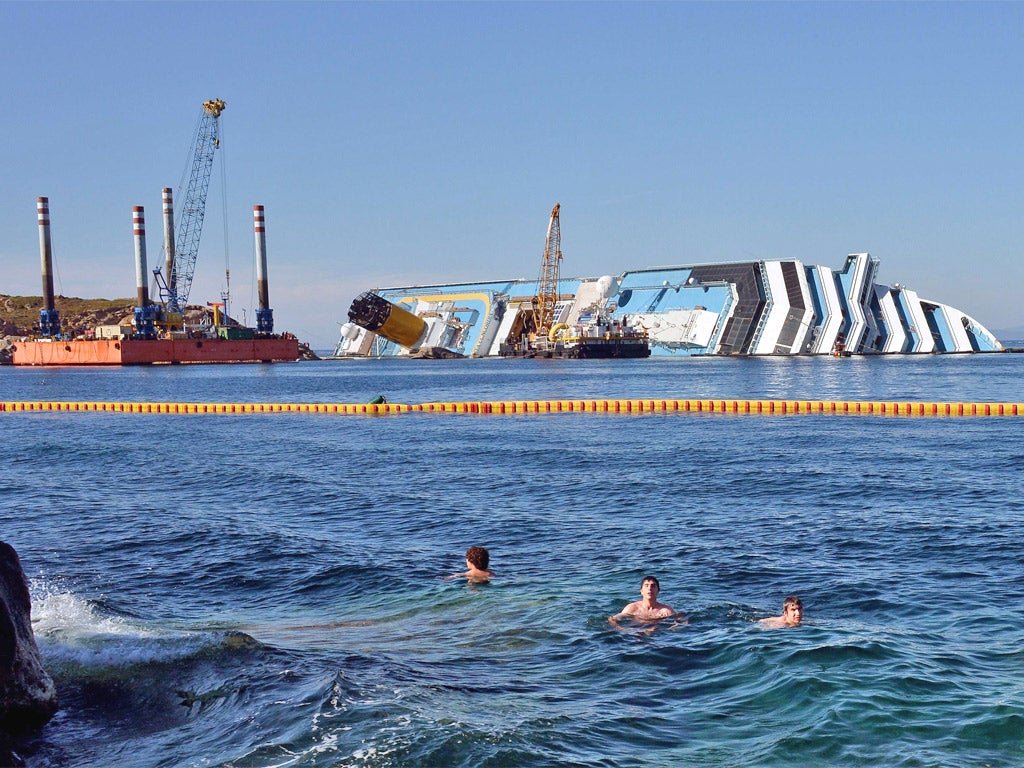The wrong maps, doors left open, bad wiring: is this why Costa Concordia really sank?
Consumer group claims electrical problems may have led to the loss of several passengers stuck in lifts

Your support helps us to tell the story
From reproductive rights to climate change to Big Tech, The Independent is on the ground when the story is developing. Whether it's investigating the financials of Elon Musk's pro-Trump PAC or producing our latest documentary, 'The A Word', which shines a light on the American women fighting for reproductive rights, we know how important it is to parse out the facts from the messaging.
At such a critical moment in US history, we need reporters on the ground. Your donation allows us to keep sending journalists to speak to both sides of the story.
The Independent is trusted by Americans across the entire political spectrum. And unlike many other quality news outlets, we choose not to lock Americans out of our reporting and analysis with paywalls. We believe quality journalism should be available to everyone, paid for by those who can afford it.
Your support makes all the difference.Senior officials at Costa Cruises knew that the Concordia liner had been sailing with electrical problems several days before it crashed on to rocks off the Italian coast with the loss of 32 lives, it was claimed yesterday.
A raft of damaging new allegations, leaked from Italian magistrates, also suggested the main doors, which were meant to be sealed, were not closed properly and that the crew were using unauthorised maritime charts when the vessel ran aground on 13 January with more than 4,000 passengers and crew aboard.
Codacons, the Italian consumer group that is leading a class-action suit against Costa Cruises, yesterday joined the attack, claiming electrical problems may have contributed to the loss of several passengers, who are thought to have died in the stricken vessel's lifts. Codacons lawyer Giuliano Leuzzi said it was feared four victims may have drowned while trapped in the lifts.
The bulk of the claims, including the allegations of crucial failures in the ship's electrical power control system, were denied by the cruise company.
Codacons nonetheless threatened to raid the wrecked vessel, which it claimed was now being dismantled before important evidence had been collected. In particular, the group is unhappy with a decision by prosecutors to allow Costa Cruises to remove radar equipment from the wreck, which lies semi-submerged off the Tuscan island of Giglio. "If they continue to dismantle the vessel without allowing the parties involved to perform the necessary checks, we will not hesitate to raid the Concordia along with survivors," said Codacons president Carlo Rienzi.
Problems with the Concordia's black box voyage data recorder (VDR) emerged on 9 January, according to correspondence acquired by investigators. And it was claimed yesterday that the vessel's black box was not working at the time of the collision.
In one of a series of emails in the days before the disaster, Costa Crociere's technical director, Pierfrancesco Ferro, told a repair firm: "The VDR has broken down for the umpteenth time... The situation is becoming unbearable." The emails, in which he refers to the faulty device aboard the Concordia, began on 10 January. The correspondence indicates there were plans to finally resolve the problem when the liner docked at Savona on 14 January.
In a statement yesterday, Costa Cruises said the VDR "had only issued an error code". "This in no way meant that the device was out of service, as is demonstrated by the fact that the data it contained were perfectly in line with engineers' expectations." It added: "There is no international regulation or convention that prohibits a ship from sailing in a similar situation."
Codacons, however, disagreed. "The bottom line is that the ship should never have set sail in that condition," Mr Rienzi, a lawyer, said. "Maritime law clearly states a vessel has to be fully functioning." The Costa statement also denied that a power failure affected the vessel's lifts, or the closure of the sealed doors. But it has not commented on the statement by one crew member, Simone Canessa, that doors meant to have been sealed were open at the time of the impact as "this was a practice used during the navigation to ease the flow of people who were at work".
On the claims regarding "unauthorised" sea charts, Costa Cruises said "the ship was equipped with all the paper and electronic nautical charts needed to complete the voyage planned… but what is most worth remembering is that the ship should never have been sailing so close to the coast".
Francesco Schettino, the vessel's captain, is being investigated for multiple manslaughter and abandoning ship before all of the 4,229 passengers and crew. Eight others, including three executives from Costa Cruises, are under investigation. Operations to remove the shipwreck began in June and are expected to take up to a year to complete. The results of technical analysis will be revealed at a court hearing on July 21.
Join our commenting forum
Join thought-provoking conversations, follow other Independent readers and see their replies
Comments